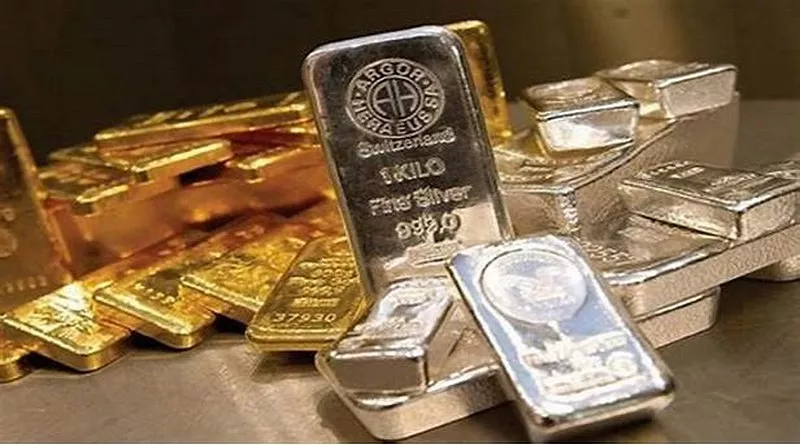The allure of precious metals as a store of value and a hedge against economic uncertainties has drawn investors for centuries. When contemplating an investment in precious metals, a common dilemma arises: “Is it better to buy silver or gold?” In this comprehensive guide, we will delve into the nuanced differences between silver and gold, exploring their unique characteristics, market dynamics, and considerations to help investors make informed decisions in the glittering realm of precious metal investments.
1. Understanding the Basics: Silver and Gold Unveiled:
Inherent Value: Both silver and gold are precious metals with intrinsic value, renowned for their scarcity, durability, and historical significance as mediums of exchange.
Market Pricing: While both metals are subject to market fluctuations, gold typically commands a higher price per ounce than silver. The market dynamics influencing these prices can vary based on economic conditions, industrial demand, and investor sentiment.
2. The Case for Gold: Unveiling the Gilded Appeal:
Historical Significance: Gold has long been associated with wealth and luxury. Its historical role as a store of value, currency, and symbol of prestige contributes to its enduring appeal.
Portability and Concentrated Value: Due to its higher price per ounce, gold is more portable for large amounts of value. This concentration of value makes it appealing for investors seeking a compact and high-value asset.
Safe-Haven Status: Gold is often considered the ultimate safe-haven asset, with a track record of retaining value during economic downturns and periods of heightened uncertainty.
3. The Charms of Silver: A Diverse Investment Option:
Industrial Demand: Unlike gold, silver has significant industrial applications, making it not just a precious metal but also an essential component in various industries, including electronics and medical technology.
Affordability and Accessibility: Silver’s lower price per ounce makes it more accessible for a broader range of investors. Its affordability allows individuals to accumulate larger quantities without significant financial outlays.
Potential for Price Appreciation: Silver’s industrial demand, coupled with its historical role as money, can contribute to price volatility. This volatility presents opportunities for investors looking for potential price appreciation.
4. Factors Influencing Silver and Gold Prices: A Comparative Analysis:
Economic Conditions: Both metals are sensitive to economic conditions. During economic uncertainties, investors often turn to gold for its safe-haven appeal. Silver, with its dual role as an industrial metal, can be influenced by economic growth and demand.
Inflation Hedge: Both silver and gold are considered hedges against inflation. As fiat currencies may weaken during inflationary periods, the value of precious metals tends to rise.
Central Bank Reserves: Central banks often hold both silver and gold in their reserves. Changes in central bank policies or the buying and selling activities of these institutions can influence the prices of both metals.
5. Diversification Strategies: Incorporating Silver and Gold in Your Portfolio:
Portfolio Size and Goals: The decision to invest in silver or gold can depend on the size and goals of your investment portfolio. Gold’s concentrated value may be suitable for preserving wealth, while silver’s affordability allows for diversification.
Risk Tolerance: Silver, with its potential for higher volatility, may be suitable for investors with a higher risk tolerance seeking potential capital gains. Gold, known for its stability, is often favored by conservative investors.
Market Timing: Timing can play a crucial role in precious metal investments. The cyclical nature of markets and the different influences on silver and gold prices necessitate strategic considerations based on market conditions.
Conclusion: The Gilded Decision: Silver, Gold, or Both?
In conclusion, the decision to invest in silver or gold ultimately depends on individual preferences, investment goals, and risk tolerance. Both metals offer unique advantages and cater to different investment strategies.
Gold, with its historical significance, stability, and safe-haven status, appeals to those seeking a timeless store of value. Silver, on the other hand, offers affordability, potential for price appreciation, and a diverse range of industrial applications.
Many investors opt for a balanced approach, incorporating both silver and gold into their portfolios to benefit from the strengths of each metal. Diversification across precious metals can enhance resilience against market uncertainties and provide a well-rounded strategy for long-term wealth preservation.
Ultimately, whether it’s the timeless allure of gold or the industrial versatility of silver, the decision should align with your investment objectives, financial situation, and the broader market landscape. As you navigate the gilded decision between silver and gold, strategic planning and a clear understanding of your investment goals will guide you towards a glittering future in the world of precious metal investments.

